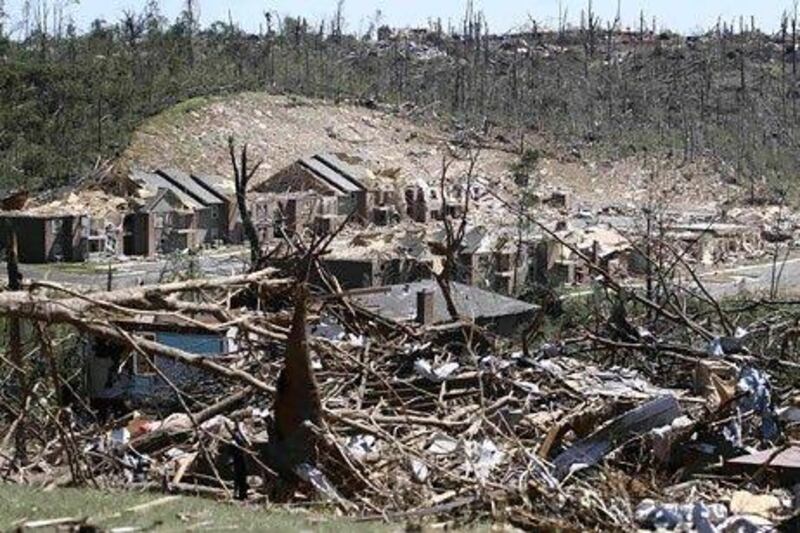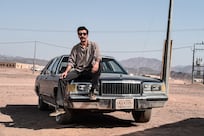TUSCALOOSA, ALABAMA // The death toll from killer tornadoes in the southern United States rose to at least 350 early Saturday, making the storm the second-deadliest tornado-related tragedy in US history.
The worst tornado outbreak in the United States in March 1925 left 747 people dead. The third-deadliest tornado storm struck in 1932, killing 332 people.
"I've never seen devastation like this. It is heartbreaking," President Barack Obama said in Tuscaloosa Friday after meeting victims whose homes were demolished.
In Alabama alone, Wednesday's deadly storms claimed 254 lives, the state Emergency Management Agency reported.
In addition, 1,730 people in the state were either hospitalized or injured while eight others were listed as missing.
Entire blocks were obliterated in Tuscaloosa, a city of about 90,000 people, where Obama and First Lady Michelle Obama touched down to see the destruction firsthand, meet with Alabama Governor Robert Bentley, and shake hands and hug distraught residents.
Obama pledged help for Tuscaloosa and dozens of other cities and towns across the US south struck by the worst US natural disaster since Hurricane Katrina in 2005.
Obama spoke as the first estimates about the magnitude of property damage emerged, with catastrophe modeling firm EQECAT saying the tornadoes could result in between $2 billion and $5 billion in insurance costs.
"We can't bring those who have been lost back, they are alongside God at this point," Obama said, but he pledged "maximum federal help" to cope with property damage and recovery costs.
The number of confirmed tornado-related deaths increased Friday to 254 in Alabama, the worst-hit state; to 34 in Mississippi; and to eight in Arkansas, officials said.
Aside from those states, the twisters left 34 dead in Tennessee, 15 in Georgia, and five in Virginia, according to state officials.
Families picked through the remains of homes, businesses and schools, bearing witness to scenes of devastation more common in war zones or after earthquakes.
In a bid to maintain order, Tuscaloosa Mayor Walter Maddox ordered a curfew, lasting from dusk until 8:00 am, for the second night. A police precinct was among the buildings damaged.
A sign on one door bluntly warned potential intruders what awaits them: "I will shoot you."
In addition to the deaths in Alabama, there were up to a million people left without power. Restoration of electricity could take several days.
States of emergency were declared from central Oklahoma to Georgia on the eastern seaboard, and governors called out the National Guard -- including 2,000 troops in Alabama -- to help with the rescue and clean-up operations.
"We had a major catastrophic event here in Alabama with the outbreak of numerous long-track tornadoes," said Governor Bentley.
Rescue workers battled through the day searching for missing people and trying to rescue survivors still trapped in the rubble.
Many homes looked like they had been blown inside out, with the walls torn down and furniture spilling into the street.
In a parking lot at the University of Alabama in Tuscaloosa, where 36 people were confirmed dead, tornadoes smashed 20 cars, leaving many piled on top of one another.
"I don't want to think now on how much I lost," Robert Mitton told AFP. "I hope we can get some help from the government. I live very close, my house is very damaged, but my family is fine."
Owen Simmons, who works in a furniture store, pointed to a black cross and a zero below painted on the side of his house.
"It means that the rescue team has already checked my home and they found no victims. That's what really matters."
Tommy Dockery, a member of a local emergency response team, thought he was safe in a steel-and-concrete fortified basement of a government building. But the building turned out to be no match to a giant twister.
"The whole building came crashing down on top of us," he said.
The crew used axes and picks and crowbars to dig themselves out.






